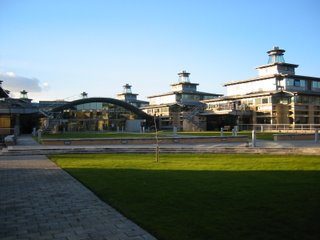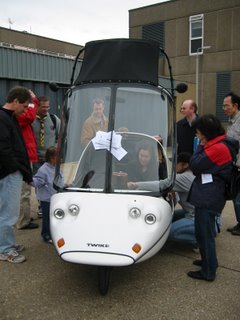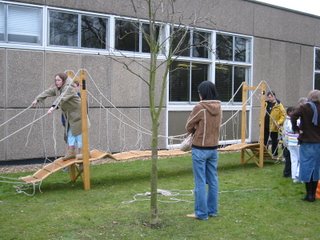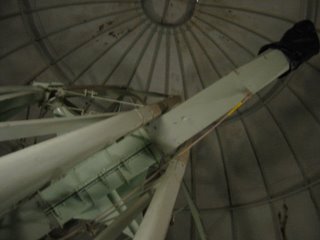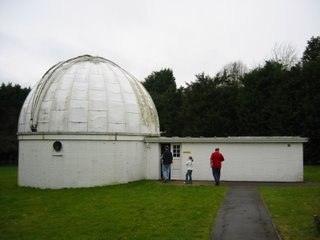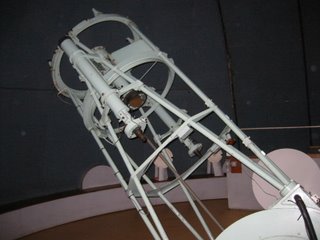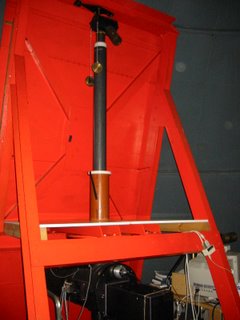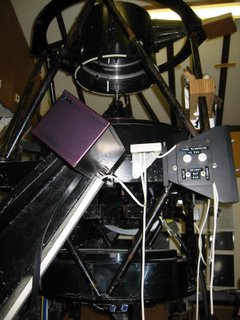Stonehenge, Old Sarum, Salisbury
This is the first of three blog entries about our most recent excursion. On this trip, we rented a car and drove into the west of England! We visited Stonehenge, the ruins of Old Sarum, and Salisbury Cathedral on the first day. Below are a few of the 71 pictures we took on Day One.
Stonehenge was amazing. You are driving along the road, go over a hill and there it is. Danny actually took 14 pictures of these...rocks (after making a little fun of going there). The most ancient part of Stonehenge is about 5,000 years old.
 You can see the Cursus Barrow (one of a number of burial mounds on the site) in the far distance here.
You can see the Cursus Barrow (one of a number of burial mounds on the site) in the far distance here. Here is the first close-up view you get after emerging from the tunnel that crosses under the road from the car park.
Here is the first close-up view you get after emerging from the tunnel that crosses under the road from the car park. These Sarsen stones are part of the outer circle of Stonehenge and are among the oldest.
These Sarsen stones are part of the outer circle of Stonehenge and are among the oldest. These stones are a part of what is called the Sarsen horseshoe. On the right you can see the tallest stone. It has a small triangular shaped stone set in a slot on the top of the Sarsen. This is believed to be the sighting stone along which the position of the sun and other stars were found when the site was used as an astronomical "observatory" in ancient times.
These stones are a part of what is called the Sarsen horseshoe. On the right you can see the tallest stone. It has a small triangular shaped stone set in a slot on the top of the Sarsen. This is believed to be the sighting stone along which the position of the sun and other stars were found when the site was used as an astronomical "observatory" in ancient times. Here is a beautiful picture of Stonehenge from the far end of the pathway that runs through the site. Of course, no one is allowed to get any closer to the stones than we got.
Here is a beautiful picture of Stonehenge from the far end of the pathway that runs through the site. Of course, no one is allowed to get any closer to the stones than we got.  Look at the stone in the ground in front. Originally there were four of these, placed around the stones so that they not only formed a perfect rectangle if connected by lines, but the central point of that rectangle lies in the exact center of Stonehenge. It is believed they were used to mark the position of the rising sun on the summer and winter solstices, and used as survey markers by the original builders.
Look at the stone in the ground in front. Originally there were four of these, placed around the stones so that they not only formed a perfect rectangle if connected by lines, but the central point of that rectangle lies in the exact center of Stonehenge. It is believed they were used to mark the position of the rising sun on the summer and winter solstices, and used as survey markers by the original builders.We then drove to the ancient fort of Old Sarum (as in Edward Rutherford's novel Sarum). This fort, like Stonehenge, dates from as much as 5,000 years ago. It is also reported that in the 11th century, William the Conqueror paid off his troops here. Old Sarum lies atop a hill overlooking the city of Salisbury.
 This picture is of the moat, taken from the bridge that connects to the topmost part of Old Sarum hill. The bridge we were standing on would have actually been a drawbridge over this (very large) moat.
This picture is of the moat, taken from the bridge that connects to the topmost part of Old Sarum hill. The bridge we were standing on would have actually been a drawbridge over this (very large) moat. This is the gatehouse that led to the Inner Bailey, the open expanse at the very top of the hill. The next few photos were taken from this site.
This is the gatehouse that led to the Inner Bailey, the open expanse at the very top of the hill. The next few photos were taken from this site. Here is a picture of part of the Royal Palace ruins (the lower level of the palace).
Here is a picture of part of the Royal Palace ruins (the lower level of the palace). These are the ruins of St. Margaret's Chapel which was used for public worship. Notice the arch above the altar. The royals would have used the chapel on the floor above this one (now gone), called St. Nicholas's Chapel.
These are the ruins of St. Margaret's Chapel which was used for public worship. Notice the arch above the altar. The royals would have used the chapel on the floor above this one (now gone), called St. Nicholas's Chapel. This beautiful view, of the Cathedral ruins, was taken from the steps of the Great Tower (or castle keep) at the top of the hill. The Great Tower was the first stone building in the inner bailey and was where the king stayed while the Royal Palace was being built. After the Palace was built, the Tower housed the garrison.
This beautiful view, of the Cathedral ruins, was taken from the steps of the Great Tower (or castle keep) at the top of the hill. The Great Tower was the first stone building in the inner bailey and was where the king stayed while the Royal Palace was being built. After the Palace was built, the Tower housed the garrison. This is another beautiful picture of the foundation of the Cathedral. The cloister would have been on the right side in this picture, where three pillar bases are seen.
This is another beautiful picture of the foundation of the Cathedral. The cloister would have been on the right side in this picture, where three pillar bases are seen. Believe it or not, this was one of two 'toilets' (or sewers) in the Castle. One was for the King, the other for public use.
Believe it or not, this was one of two 'toilets' (or sewers) in the Castle. One was for the King, the other for public use.  This is on the lower level of the palace and was probably part of the kitchen.
This is on the lower level of the palace and was probably part of the kitchen. Here is a nice wide view of the ruins of the castle and the inner bailey.
Here is a nice wide view of the ruins of the castle and the inner bailey. If you walk along the ledge of the fort at the top of the hill, you see beautiful countryside as well as the city of Salisbury. Notice the cathedral spire in the distance. That's our next stop.
If you walk along the ledge of the fort at the top of the hill, you see beautiful countryside as well as the city of Salisbury. Notice the cathedral spire in the distance. That's our next stop. Here is the main gate to Salisbury Cathedral. It hides the treasures behind it.
Here is the main gate to Salisbury Cathedral. It hides the treasures behind it. As you can see here, the north side of the Cathedral is undergoing major renovations. It is a 13th century cathedral that includes Britain's tallest Church spire (404 ft.).
As you can see here, the north side of the Cathedral is undergoing major renovations. It is a 13th century cathedral that includes Britain's tallest Church spire (404 ft.).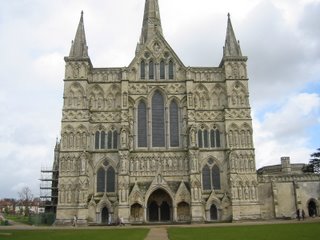 Isn't the western facade of this cathedral beautiful?
Isn't the western facade of this cathedral beautiful?  Salisbury Cathedral also contains Britain's largest Cathedral cloisters. This is a picture of the spire from within the cloister.
Salisbury Cathedral also contains Britain's largest Cathedral cloisters. This is a picture of the spire from within the cloister. The cloisters, pictured here again, were really quite large. They will be gorgeous when the plants are in full bloom.
The cloisters, pictured here again, were really quite large. They will be gorgeous when the plants are in full bloom. This medieval clock, located inside the cathedral, is Britain's oldest working clock. It was made in 1386 and is still running today. It was designed to strike only on the hour. Notice that it has no face. It is powered by two large cylindrical stone weights, visible at the left edge of the photo.
This medieval clock, located inside the cathedral, is Britain's oldest working clock. It was made in 1386 and is still running today. It was designed to strike only on the hour. Notice that it has no face. It is powered by two large cylindrical stone weights, visible at the left edge of the photo. Here is the nave of the cathedral.
Here is the nave of the cathedral. The choir stalls contain some lovely woodwork; here is one of a number of beautiful angels that adorn them. This cathedral also has the earliest surviving complete set of choir stalls in Britain.
The choir stalls contain some lovely woodwork; here is one of a number of beautiful angels that adorn them. This cathedral also has the earliest surviving complete set of choir stalls in Britain. We loved this tomb, which belongs to Sir Thomas and Lady Gorges, because of the dodecahedron, icosahedron, and octahedron that he had carved on top of it. Apparently, Sir Thomas was something of a mathematician who had this tomb built before either he or his wife died.
We loved this tomb, which belongs to Sir Thomas and Lady Gorges, because of the dodecahedron, icosahedron, and octahedron that he had carved on top of it. Apparently, Sir Thomas was something of a mathematician who had this tomb built before either he or his wife died. This beautiful picture is looking west from the cloisters.
This beautiful picture is looking west from the cloisters. Of course, no ancient cathedral is complete without gargoyles. This is an example of a gargoyle mounted outside one of the doors of the cathedral.
Of course, no ancient cathedral is complete without gargoyles. This is an example of a gargoyle mounted outside one of the doors of the cathedral.We were unable to take photographs inside the Chapter House with its treasure: the finest one of only four surviving original manuscript copies of Magna Carta (1215). It was truly amazing to see it, still in pristine form, too, protected from our eyes (and hands) only by a single heavy piece of glass. (Here is a link to an image of the document.) Compare this to the copy of the U.S. Constitution and Bill of Rights (1789), which traces its development to Magna Carta. The American cousins to Magna Carta are housed at the National Archives in Washington in a buiding impervious to military assault and employs sophisticated security to thwart vandals!
Well, our first day was over. Time to find our hotel room in the city of Bath.

